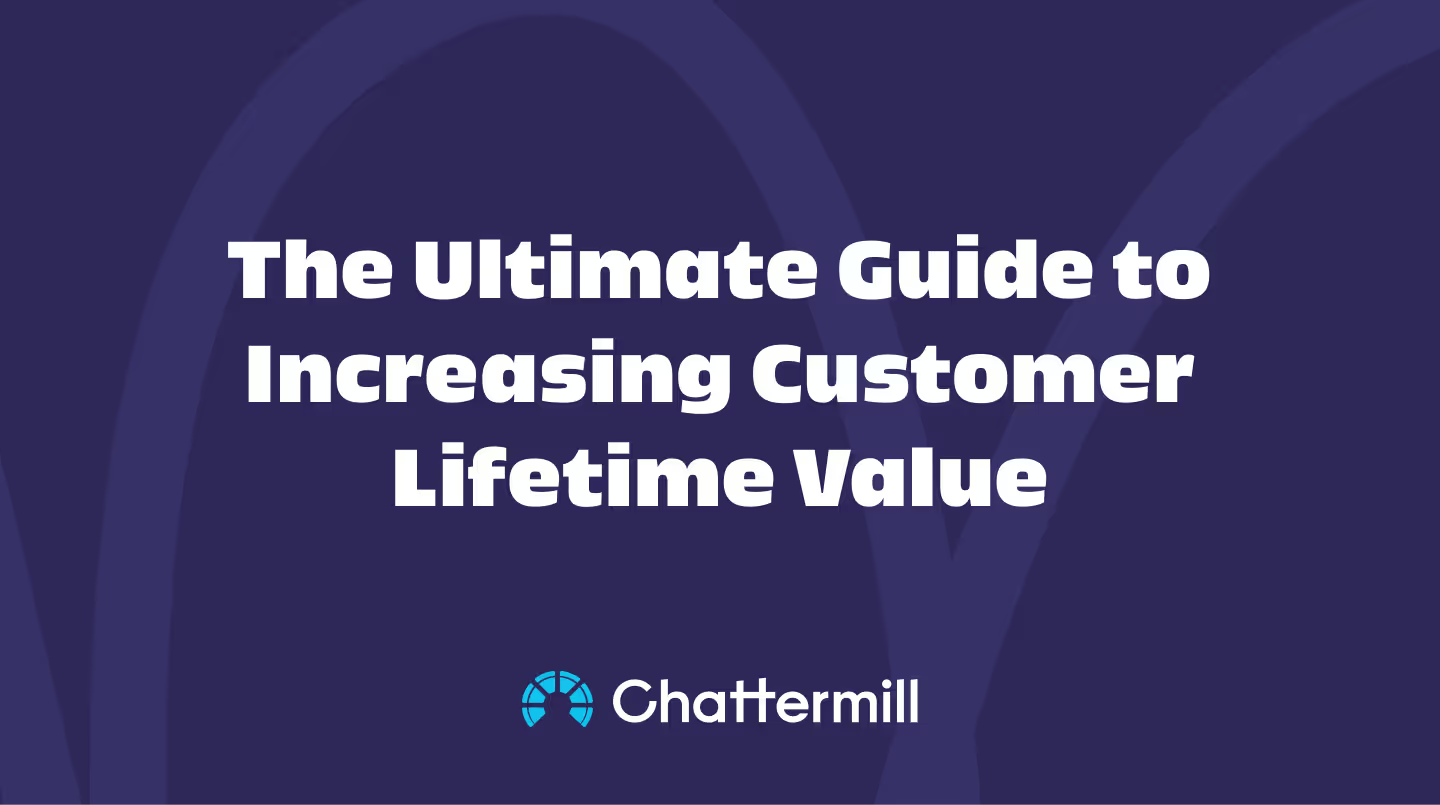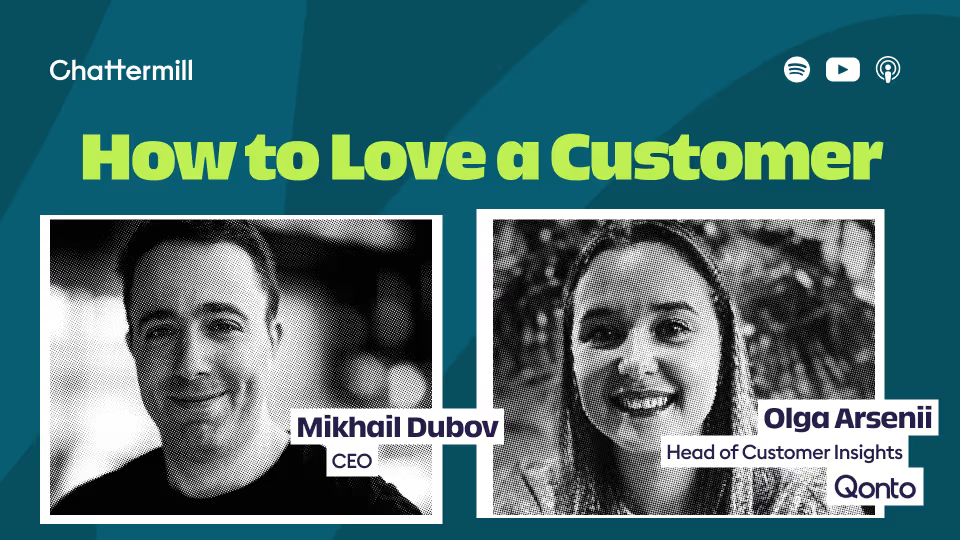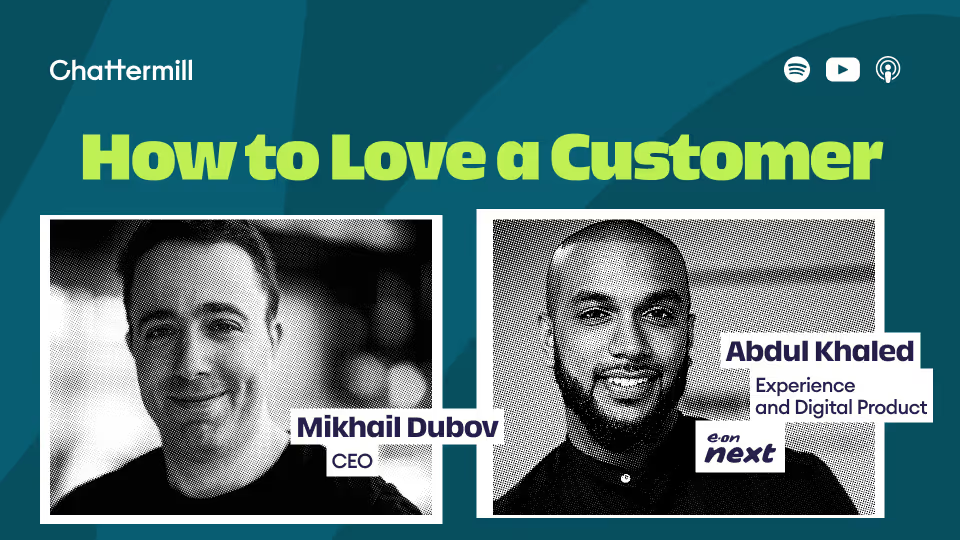In today's competitive market, understanding and maximizing Customer Lifetime Value (CLV) is essential for any business striving for success. CLV is a critical metric that offers deep insights into the customer experience (CX) and highlights the long-term value a customer brings to a company. By focusing on CLV, businesses can build lasting relationships with customers while increasing profitability.
To harness the full potential of CLV, companies must adopt strategies that enhance the entire customer journey. From soliciting feedback at key touchpoints to personalizing interactions and improving early experiences, these methods are proven to drive customer loyalty and satisfaction. Additionally, understanding the drivers behind customer loyalty can significantly influence CLV.
In this ultimate guide, we will explore the importance of CLV as a CX metric, delve into the top seven strategies to increase it, and discuss how feedback plays a pivotal role in boosting CLV. Get ready to discover actionable insights and best practices to elevate your customer engagement and drive substantial growth for your business.
Intro: Why CLV is the Ultimate CX Metric
In the world of customer-centric businesses, Customer Lifetime Value (CLV) stands out as the ultimate Customer Experience (CX) metric. CLV measures the total value a customer brings to a company over their entire relationship. This crucial metric is vital because it highlights the benefits of retaining loyal customers, which can often outweigh the costs of new customer acquisition.
Focusing on CLV encourages businesses to enhance customer interactions and experiences, increasing satisfaction and retention. By understanding each customer journey, companies can create personalized marketing campaigns. This approach not only fosters loyalty but also boosts future revenue.
Viewing CLV through the lens of customer segments allows businesses to tailor experiences for high-value customers. This is key to thriving in a competitive market. Personalized experiences maintain strong retention rates, which directly impact the customer base and revenue.
Consider these strategies to increase CLV:
- Implement a loyalty program.
- Optimize marketing efforts to target valuable customers.
- Enhance customer experiences to increase purchase frequency.
In essence, prioritizing CLV empowers businesses to create lasting customer relationships that drive sustainable growth.
Top 7 Proven Strategies to Increase Customer Lifetime Value
Boosting Customer Lifetime Value (CLV) is crucial for ensuring continuous business growth and sustainability. By focusing on strategies that enhance the entire relationship with customers, businesses can increase customer satisfaction, retention, and revenue. Employing techniques such as personalization, feedback collection, and strategic marketing efforts can significantly impact the value and loyalty of high-value customers. Here are seven proven strategies to increase CLV effectively.
1. Collect and Act on Customer Feedback at Every Stage
Actively gathering and using customer feedback is key to refining the customer experience. Feedback can highlight areas for growth and satisfaction. Utilize tools like feedback pop-up widgets or applications such as POWR or Grapevine Surveys. These help efficiently collect customer insights on your products or services. Regular feedback analytics allows businesses to recognize common pain points and address them, maximizing customer lifetime value. Doing so shapes a more responsive and customer-focused approach, ensuring interactions meet customer expectations.
2. Identify and Fix CX Breakpoints Quickly
Identifying and resolving customer experience (CX) breakpoints is essential for smooth customer journeys. Tools such as the Customer Effort Score (CES) survey can pinpoint customer frustrations quickly. By mapping these pain points, businesses can streamline the customer journey effectively. Learn how Mindful Chef improved retention and CLV by identifying and fixing recurring issues using Chattermill. Quick resolutions like these drive repeat business and build a loyal customer base.
3. Personalize the Customer Journey
Personalization in the customer journey can significantly impact conversion rates. Personalized emails, product recommendations, and targeted customer service cater to individual needs. This approach increases engagement and satisfaction. Implementing an omnichannel strategy delivers real-time, tailored experiences based on customer profiles and preferences. Chattermill’s Product Feedback Analytics helps companies analyze preferences to craft hyper-personalized experiences, maximizing CLV.
4. Improve Onboarding and Early Customer Experience
A smooth onboarding sets a positive tone for the entire customer relationship. Simplifying this process ensures minimal effort from customers, highlighting the value your business offers. By personalizing the onboarding for specific buyer personas, businesses create a more tailored experience. Journey mapping identifies and resolves early friction points. Use insights from Chattermill’s CX analytics to optimize the onboarding flow and encourage longer, more profitable relationships.
5. Measure and Optimize Net Promoter Score (NPS)
The Net Promoter Score (NPS) is a simple yet powerful metric for gauging customer satisfaction. It asks customers the likelihood of recommending your company, providing insight into their experience. Read more in our guide to Transactional Net Promoter Score (tNPS) to better understand how frequent, touchpoint-based measurement can fine-tune customer experience. Regularly optimizing NPS drives improvements that enhance CLV over time.
6. Uncover Drivers of Loyalty and Satisfaction
Understanding what drives customer loyalty and satisfaction is crucial for maintaining a strong customer base. Repeat customers often reveal key satisfaction factors that can guide business improvements. Our article on how top brands use feedback explores real-world examples of insights in action. Personalized experiences and strategic loyalty programs developed through feedback data increase repeat purchases and long-term value.
7. Unify Your Feedback Data for a 360° View
Integrating feedback from all customer interactions provides a full picture of their experiences. Chattermill's Unified Customer Experience approach centralizes insights from surveys, support, and reviews. This allows brands to act with confidence and speed. A 360° view enables smarter decision-making, helps preempt churn, and increases advocacy — all critical levers for boosting CLV.
The Link Between Customer Feedback and CLV: Backed by Data
Customer feedback is vital for improving Customer Lifetime Value (CLV). CSAT surveys can highlight product strengths and weaknesses. This helps businesses make improvements that boost satisfaction and CLV.
High survey response rates provide valuable insights. They give feedback that helps refine retention strategies. This, in turn, can enhance the CLV. Both satisfied and dissatisfied customers offer useful feedback. It helps identify areas for growth, improving satisfaction and increasing CLV.
Net Promoter Score (NPS) surveys are also crucial. They offer a starting point for gathering customer satisfaction data. Businesses can then use this data to make informed improvements, thereby boosting CLV.
Using customer segments for personalized experiences can further maximize retention. This tactic focuses on delivering experiences that make customers feel valued. Happy customers stay longer, raising their CLV. Listening to feedback and acting on it turns satisfied customers into loyal customers, boosting their entire relationship with your company.
Understanding the link between feedback and CLV is key for future revenue growth.
Common Mistakes That Hurt CLV (and How Feedback Solves Them)
To boost Customer Lifetime Value (CLV), avoid these common pitfalls:
- Infrequent Calculations: Many businesses fail to update CLV calculations. This oversight prevents adaptation to changing customer behaviors, which can distort marketing efforts.
- Unrealistic Timeframes: Setting the wrong timeframes skews data interpretation. This leads to underestimated CLV and misaligned strategies.
- Ignoring Feedback: Not using customer feedback limits improvement. Feedback is key for addressing customer needs and increasing satisfaction.
- Poor Experience Management: Neglecting customer experience risks higher churn and reduced word-of-mouth referrals. This lowers lifetime revenue.
By valuing customer interactions, businesses gain insights to refine offerings. This increases the loyalty of high-value customers and enhances future revenue. Ensuring satisfied customers remain engaged benefits the entire relationship over a period of time, elevating CLV.
How to Measure the Impact of Feedback on CLV
Understanding how customer feedback impacts Customer Lifetime Value (CLV) is crucial. Here's a brief guide:
- Use Surveys for CX Data: Conduct surveys to gather customer experience data. This can highlight areas for improvement in your customer interactions, which boosts CLV. Learn how to make the most of survey insights in our guide to Voice of the Customer frameworks.
- Follow-Up Interactions: Maintain contact with customers after resolving issues or completing sales. This keeps your brand top of mind and encourages repeat business, enhancing their lifetime value. Explore how closed-loop feedback systems turn insights into action and create loyalty.
- Identify Attrition Signs: Study CLV to spot early warning signs of customer attrition. Early action can involve enhancing loyalty programs or customer support. Chattermill’s Customer Experience Intelligence can help uncover key churn indicators before it’s too late.
- Integrate Feedback: Use customer feedback to adjust your service strategies. This strengthens customer loyalty, which directly impacts CLV. Read how brands like Uber leverage feedback to evolve customer experiences.
- Analyze High-CLV Customers: Look for common traits in valuable customers via feedback analysis. Apply these insights to improve interactions across your customer base. Start by using CX analytics to pinpoint what drives satisfaction and retention among your best customers.
Next Steps: Implementing a Feedback Strategy That Drives CLV
To boost Customer Lifetime Value (CLV), implementing a feedback strategy is crucial. Start by leveraging surveys to gather insights from both satisfied and dissatisfied customers.
Use AI-powered tools in Customer Relationship Management (CRM) systems. These tools can improve customer data analysis, helping you spot trends. This allows for proactive feedback strategies that enhance customer experience management. When customer satisfaction rises, so does loyalty, while churn decreases.
A Simple, High-Impact Plan to Increase Customer Lifetime Value with Feedback
Implementing customer feedback strategically can significantly elevate CLV. Here’s a clear roadmap for turning insights into long-term value:
- Distribute Surveys StrategicallyReach out to both satisfied and dissatisfied customers to capture a balanced view of their experiences.
- Use multiple channels like email, in-app prompts, and post-interaction follow-ups.
- Offer incentives such as discounts or loyalty points to boost participation — especially among happy customers who are less likely to give feedback. For guidance on crafting effective NPS surveys, refer to our Practitioner's Guide to NPS Surveys.
- Analyze Feedback with PurposeLeverage AI-powered tools like Chattermill to process qualitative feedback at scale.
- Identify recurring themes and friction points across customer journeys.
- Segment data by CLV tiers to understand what drives high-value behaviors. Our article on Enhancing Customer Insights with Feedback Analytics delves deeper into this process.
- Align Product and Experience Around InsightsUse feedback insights to guide product development and CX improvements.
- Prioritize features or services that meet the needs of your most loyal, high-CLV segments.
- Refine your messaging and positioning to speak directly to these customers' priorities. Learn more about aligning product strategies in our Product Feedback Software section.
- Track the Metrics That MatterMonitor how your actions are influencing core drivers of CLV.
- Key indicators include Net Promoter Score (NPS), Customer Satisfaction Score (CSAT), repeat purchase rates, and average order value.
- Set benchmarks and track shifts over time to measure ROI on feedback initiatives. For a comprehensive understanding of NPS and its impact, explore our Ultimate Guide to Net Promoter Score.
This strategy aligns products with customer needs, driving retention and optimizing marketing efforts. By enhancing the entire relationship, your future revenue potential grows. Follow these steps to create a more valuable customer base.
Increasing Customer Lifetime Value (CLV): FAQs
What is customer lifetime value (CLV)?
Customer lifetime value (CLV) is the total revenue a business can expect to earn from a customer throughout the entire relationship. It reflects both the profitability and loyalty of customers over time.
Why is CLV important for businesses?
CLV helps businesses understand the long-term value of their customer base. By increasing CLV, companies can reduce churn, improve profitability, and maximize return on marketing and acquisition efforts.
How is CLV calculated?
CLV is typically calculated using average purchase value, purchase frequency, and customer lifespan. Multiplying these factors provides an estimate of the revenue generated by a single customer.
What strategies increase customer lifetime value?
Strategies include improving onboarding, delivering personalized experiences, offering loyalty programs, cross-selling and upselling, and maintaining strong customer support.
How does customer experience affect CLV?
A positive customer experience increases satisfaction, loyalty, and repeat purchases. Reducing friction and consistently meeting expectations directly contributes to higher CLV.
What role does personalization play in increasing CLV?
Personalization ensures customers receive tailored offers, recommendations, and communications. This strengthens relationships, encourages repeat purchases, and extends customer lifespan.
How can retention efforts improve CLV?
Retention strategies such as proactive communication, reward programs, and responding to feedback help keep customers engaged and reduce churn, leading to higher lifetime value.
What metrics should businesses track to improve CLV?
Key metrics include retention rate, churn rate, average order value, purchase frequency, and Net Promoter Score (NPS). Monitoring these indicators helps businesses optimize CLV strategies.















